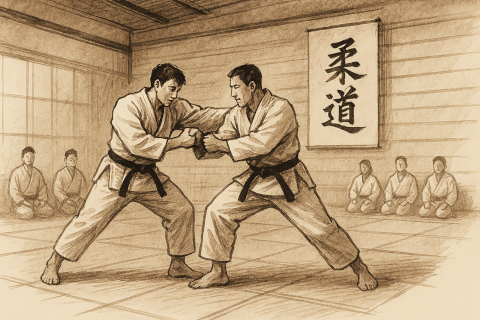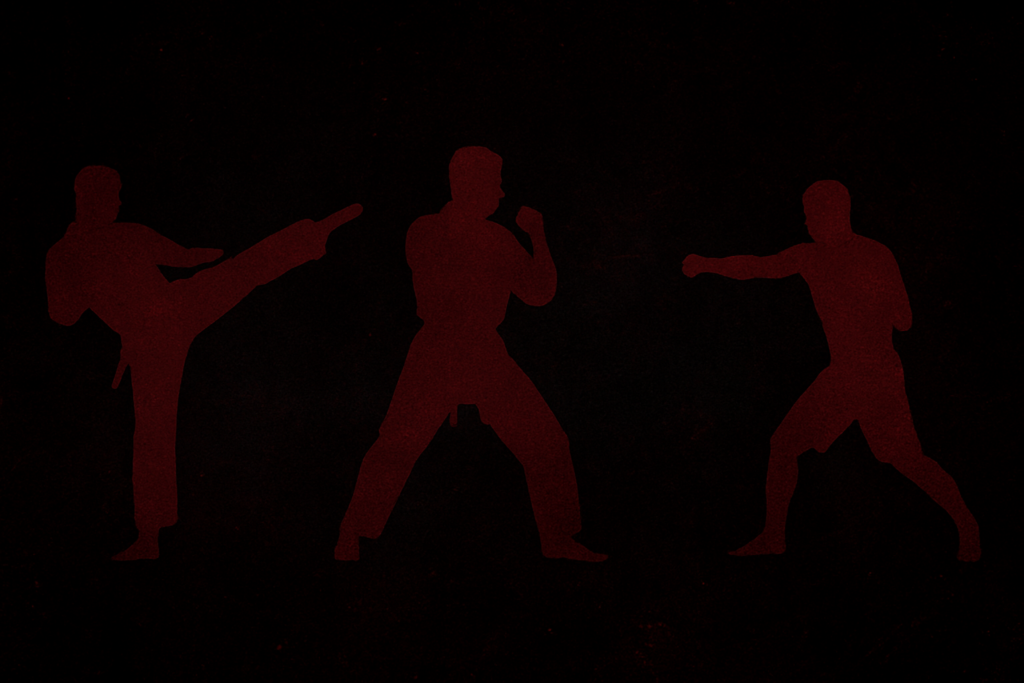The Gentle Way to Strength, Balance, and Respect
🧠 A Brief History of Judo

Judo (柔道) — meaning “the gentle way” — was founded in Japan in 1882 by Jigoro Kano (1860–1938).
Kano, a scholar and educator, studied traditional Japanese jujutsu but sought to modernize it into a system of self-improvement and physical education.
He removed the most dangerous techniques and emphasized throws, holds, and leverage rather than strikes or joint destruction.
The result was Judo, a martial art — and now an Olympic sport — focused on using an opponent’s force against them, developing not only strength but also balance, humility, and mutual respect.
🏯 Main Characteristics of Judo
- Core Principle: “Maximum efficiency with minimum effort.”
- Training focus: Throws (nage-waza), pins, joint locks, and strangles (katame-waza).
- Mindset: Cooperation and mutual benefit (jita kyoei).
- Objective: To control an opponent using skill, timing, and technique — not brute force.
Judo emphasizes both tactical thinking and physical coordination, making it ideal for practitioners of all ages who value both mind and body development.
⚔️ The Philosophy Behind Judo
Kano envisioned judo as a way to build character, confidence, and social responsibility.
He famously said:
“Judo is the way to the most effective use of both physical and spiritual strength.”
This balance between competition and education is what sets Judo apart — it’s a way of life, not just a fighting system.
🥇 Key Techniques in Judo
- Throws (Nage-waza): Sweeps, hip throws, and leg reaps that use leverage instead of strength.
- Groundwork (Ne-waza): Pins, chokes, and joint locks for control and submission.
- Ukemi (Breakfalls): Safe falling techniques to prevent injury and build confidence.
Every judo class develops reflexes, awareness, and respect through structured drills and cooperative training.
🧩 Major Judo Schools and Lineages
While Judo is largely unified under the Kodokan system (founded by Kano himself), various organizations and lineages have shaped the art worldwide:
| School / Organization | Founder / Leader | Key Characteristics |
|---|---|---|
| Kodokan Judo | Jigoro Kano (1860–1938) | The original school; emphasizes education, moral development, and technical mastery. |
| Kosen Judo | Developed in Japanese universities (early 1900s) | Focuses heavily on groundwork (ne-waza) and submissions. |
| International Judo Federation (IJF) | Global governing body (est. 1951) | Regulates Olympic and international sport Judo. Prioritizes throwing and pinning under competition rules. |
| Traditional Judo (Goshin Jutsu) | Derived from Kodokan kata | Self-defense applications emphasizing practical techniques. |
While the spirit of Judo remains the same — efficiency, respect, and mutual growth — practitioners can choose to train for sport, tradition, or self-defense depending on their interests.
🧒 Who Can Practice Judo?
One of Judo’s greatest strengths is its accessibility.
| Group | Why It’s Great |
|---|---|
| Children | Builds discipline, body awareness, and social skills. Many kids’ programs focus on fun and coordination. |
| Teens & Adults | Excellent workout, stress relief, and self-defense foundation. Teaches humility through competition and teamwork. |
| Seniors | Gentle rolling and breakfall practice improve balance and prevent falls — vital for longevity and health. |
Because Judo’s techniques rely on timing, not strength, anyone can start — regardless of fitness level.
💪 Benefits of Practicing Judo
Physical Benefits:
- Develops balance, coordination, and core strength.
- Builds flexibility and endurance through dynamic movement.
- Enhances reaction time and body control.
Mental Benefits:
- Instills calmness and focus under pressure.
- Teaches respect, cooperation, and perseverance.
- Boosts confidence through progressive challenges.
Social Benefits:
- Encourages teamwork and empathy — you can’t learn Judo alone.
- Builds a strong sense of community and trust.
🏆 Judo as a Sport
Judo became an Olympic sport in 1964 (Tokyo Games) and remains one of the most practiced martial arts globally.
It’s both thrilling and safe when practiced correctly, with strict rules to prevent injury.
Competitive Judo rewards timing, grip fighting, and tactical intelligence — not aggression.
Winning by Ippon (a clean throw or pin) represents perfect technique and control.
🧘 Why You Should Try Judo
If you’re looking for a martial art that balances power with principle, Judo might be your path.
It’s ideal for those who:
- Prefer technique over brute force,
- Want a structured, respectful environment,
- Value physical fitness and mental growth, and
- Appreciate tradition and community.
🥋 In Judo, every fall is a lesson — and every rise is a victory.

